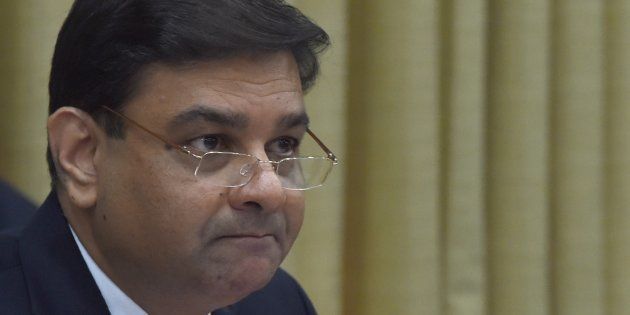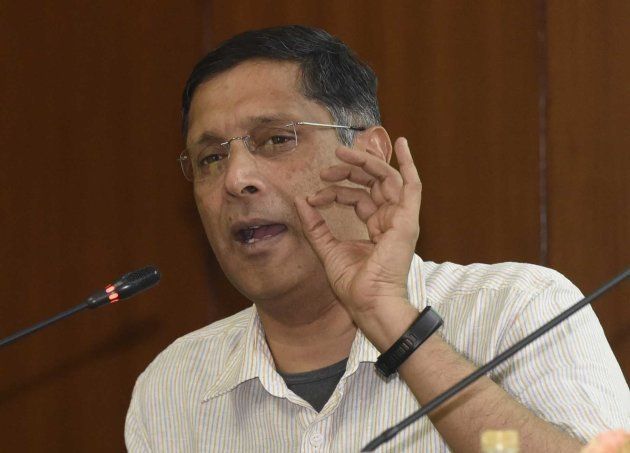
The only way to read the Monetary Policy Committee's (MPC) decision to cut the repo rate by 25 basis points is that it is meant to save face for five gentlemen and one lady.
Having made a boo-boo by misreading inflation signals last February, when the Urjit Patel-led MPC prematurely decided to harden the monetary policy from "accommodative" to "neutral", the committee stared in vain at data in the next two policies in April and June to find vindication for its presumption that inflation could roar back again.

The only one to roar back was the Chief Economic Advisor, Arvind Subramanian, who essentially told the RBI the last time that it had got its numbers badly wrong. After the June policy failed to cut rates, Subramanian noted in frustration that the RBI's "inflation-forecasting errors have been large and systematically one-sided in overstating inflation."
If he could have put it more bluntly, he would probably have said that the RBI doesn't seem to know its backside from its elbow.
If he could have put it more bluntly, he would probably have said that the RBI doesn't seem to know its backside from its elbow. There is little doubt that the RBI (or, rather, the MPC) has egg on its face, but has to pretend it isn't there. Having gone "neutral" when there was no case for it in the context of the severe demand compression that happened after demonetisation, it cannot easily now say that it was wrong and change course quickly.
It is thus seeking to justify the lack of evidence for its February policy shift as essentially precautionary in nature since things could always go wrong. Hence the statement: "The decision of the MPC is consistent with a neutral stance of monetary policy in consonance with the objective of achieving the medium-term target for consumer price index (CPI) inflation of 4 percent within a band of +/- 2 percent, while supporting growth."
The irony that a 25 basis points cut will do nothing to support growth is lost.
The Reserve Bank's verbal contortions to maintain institutional credibility is evident in one paragraph of the policy statement, a sort of indirect mea culpa offered without adequate contrition. After admitting that "the upside risks to inflation have either reduced or not materialised", and that the "baseline path of inflation, excluding the HRA impact (of Seventh Pay Commission) has fallen below the projection made in June, and that inflation, excluding food and fuel, has fallen significantly over the past three months", it adamantly states that it will watch "incoming data" to justify its retention of the "neutral stance."
This is like Newton lying under the apple tree hoping the apple will fall again so that he can prove the theory of gravity. A policy predicated on the belief that Murphy's Law will work with inflation is now being stood on its head when the Law is working in reverse: what was expected to go wrong isn't doing so.
All available data suggest that inflation is not a major threat in the next few months, except in specific vegetables where farmers tend to react negatively to any drastic fall in prices by planting too little in the next season. The recent farmer agitations for debt writeoffs were partly in protest against the fall in potato and onion prices, and even as that was happening, tomatoes were about to go through the roof, quoting at Rs 100 in some urban retail markets. The chances are inflation in the near future will be commodity-specific, and not generalised.
The chances are inflation in the near future will be commodity-specific, and not generalised.
June retail inflation was 1.54 percent and wholesale inflation at 0.9 percent, and this trend could continue at least for one more month. Core sector growth (of eight key industries) in June was just 0.4 percent, which means the full Index of Industrial Production (IIP) due in the next 10 days will be weak too. The core sector gets a weight of 40 percent in the IIP. The Nikkei Purchasing Managers' Index for manufacturing is now in negative territory (well below 50, which indicates contraction), and so a negative IIP cannot be ruled out even in July.
The economic disruption created by the implementation of the goods and services tax (GST) in June and July — the former for destocking, and the latter for rejigging supply chains to adjust to the new tax — will ensure that growth will remain anaemic in vast swathes of industry in the current quarter. A good monsoon will keep farm prices under check, and a strong rupee suppresses imported inflation. If revenues remain sluggish, public investment could also slow down, thus causing a further dent to growth.

The RBI can try and look hard for evidence that it is right, but so far it has been wrong, three policies in a row. There is a strong case for cutting rates by a larger amount (and immediately), given that industry is huffing and puffing to improve profitability or cut losses, and banks are thrashing about in turgid waters to keep their balance-sheets above the red mark.
A cut in rates is not only good for borrowers, but lenders as well, for any fall in bond yields shows up immediately in banks' balance-sheets as higher treasury income. (When bond yields fall, their prices rise, and banks can book profits by selling them.)
It is possible to say that the RBI can make amends in October by cutting rates then, but it's not the same thing. A 50 basis points cut now is better for signalling positivity than giving the same in homeopathic doses. The frog in hot water analogy holds good here. If you raise the temperate too slowly, the frog does not jump out before it is too late. By delaying his cuts, the Governor is giving industry a reason to do nothing when positive shocks could conceivably revive at least some animal spirits.
By delaying his cuts, the Governor is giving industry a reason to do nothing when positive shocks could conceivably revive at least some animal spirits.
Only ego stood in the way of the RBI doing more to help both banks and the economy.
The MPC is not God, and no one would have blamed it for going wrong on its forecasts once or twice. But the mistake is in not rectifying an error, when it is clear to everyone and the dog at the lamp-post that inflation is on the ebb.
The idea behind the MPC is that six heads are better than one. But one of the six (the RBI's Michael Patra) seems to have buried his head in sand, while four others (Governor Patel, Deputy Viral Acharya, Chetan Ghate, and Pami Dua) paid only lip-service to address the serious growth challenge the economy is facing. Only one remaining head, Ravindra Dholakia, has been able to hold it high by asking for a 50 basis points cut.